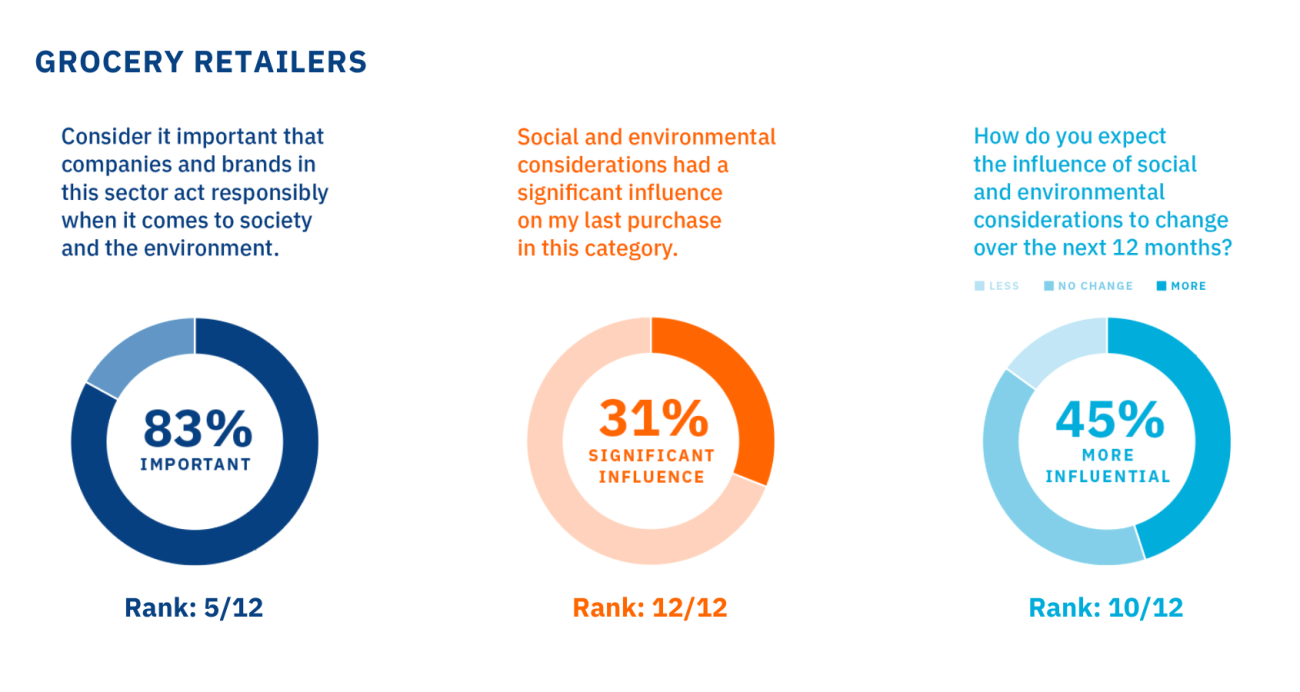How Grocers Can Unlock the Shopper Sustainability Opportunity
Retailers and the brands they carry can leverage the increasing consumer focus on sustainability to drive spending and foster loyalty. Drawing on recent research data, these strategies can overcome barriers to consumer action and capitalize on this revenue opportunity.
13 Billion Reasons for Social and Environmental Consciousness
Embracing sustainability isn’t just a moral imperative for businesses; it’s a pragmatic necessity. According to Progressive Grocer’s recent Consumer Expenditures Study (CES), sustainability concerns have permeated the mainstream to influence consumer purchasing decisions. Recent research from Glow affirms this, finding that sustainability had a significant influence for more than 31% of shoppers on their selection of grocery or convenience retailer, with 40% indicating the same for in-store food and grocery product choices. Collaborating with TriplePundit, 3BL Media and Cint, the “Size Of Prize“ study estimates a $13 billion opportunity from consumers switching grocery retailers or brands based on sustainability considerations.
[RELATED: How Albertsons Envisions the Future of Sustainability]
Price Isn’t the Sole Barrier to Sustainable Choices
The CES underscores price as the primary consumer concern influencing the choice of retailer, particularly in the current economic climate. Even among consumers with strong social and environmental values, there’s an acknowledgment that more sustainable choices aren’t always feasible at any cost. Glow’s research corroborates this, showing price as consistently the top driver of retailer and brand choice across most categories. Additionally, Glow’s findings reveal price concerns as the primary barrier preventing consumers from making more sustainable choices regarding retailers or food and grocery brands. However, price isn’t the only obstacle. Communication is also a significant barrier to overcome: 24% of consumers cited a lack of information regarding retailers’ sustainability credentials, while more than 10% identified a lack of differentiation in sustainability credentials, or distrust in sustainability claims. Thus, while price concerns dominate, communication barriers hinder consumers’ ability to make more sustainable choices. This highlights how important it is for businesses to publicize their sustainability efforts and validate their impact using credible data and independent endorsements.
An Expanding Opportunity
For grocers, there’s already a $3.9 billion opportunity to attract sustainability-influenced shoppers, with evidence indicating its growth. While 83% of shoppers deem it important for retailers to act sustainably, only 31% currently cite sustainability as a significant influence on their retailer choice. However, this gap will narrow, with 45% of shoppers expecting sustainability to have a greater impact on their choice of retailers in the next 12 months, and only 15% anticipating a decline.
[RELATED: Can This Tiny Pineapple Help Combat Food Waste?]
You Are What You Stock
This data underscores that shoppers are increasingly prioritizing retailers and brands aligned with their values. Hence, it’s crucial for grocers to communicate their social and environmental actions to shape perception. However, shoppers also evaluate retailers based on what they stock. Previous Glow research revealed that 63% of shoppers believed the products sold by a grocery or convenience store significantly affected their perception of its sustainability credentials. Thus, capitalizing on the sustainability opportunity requires retailers to collaborate with suppliers. Notably, shopper sustainability concerns vary at a category level (beauty, snacking, household, etc.) across such issues as packaging, community contribution, resource usage and health considerations. Therefore, it’s vital to understand what consumers care most about by category to ensure that your product range delivers against these needs.
Maximizing Impact
Despite the current cost-of-living crisis, sustainability remains a consideration for shoppers when selecting retailers and brands. Embracing sustainability presents a significant commercial opportunity, one that’s expanding. However, realizing this opportunity at scale necessitates addressing barriers to behavior change. This begins with pricing strategy and extends to marketing efforts. After all, if shoppers aren’t aware of a retailer’s positive impact on people and the planet, how can they choose it over the competition?









